Chemical Modification with Alkalinization and Acetylation of Ramie Fibers for Eco-Friendly 3D Printing Filaments: Effects on Crystallinity, Structure, and Hydrophobicity †
Abstract
1. Introduction
2. Research Tools and Materials
3. Research Methods
3.1. Alkalization Treatment
3.2. Hemp Fiber Acetylation Treatment Procedure
3.3. FTIR Test
3.4. Contact Angle Testing
4. Results and Discussion
4.1. Fiber Function Group
4.2. Kristalinitas Fiber
4.3. Hydrophobicity of Fiber
4.4. Fiber Morphology
4.5. Potential as 3D Printing Filament
5. Conclusions
Author Contributions
Funding
Institutional Review Board Statement
Informed Consent Statement
Data Availability Statement
Acknowledgments
Conflicts of Interest
References
- Parandoush, P.; Lin, D. A review on additive manufacturing of polymer-fiber composites. Compos. Struct. 2017, 182, 36–53. [Google Scholar] [CrossRef]
- Podgorski, R.; Wojasiński, M.; Trepkowska-Mejer, E.; Ciach, T. A simple and fast method for screening production of polymer-ceramic filaments for bone implant printing using commercial fused deposition modelling 3D printers. Biomater. Adv. 2023, 146, 213317. [Google Scholar] [CrossRef] [PubMed]
- Wang, L.E. Rami Fiber Reinforced PLA Composites for 3D Printing Applications. Polym. Compos. 2018, 3969–3977. [Google Scholar]
- Laksono, A.D.; Rozikin, M.N. Potential of ironwood powder and bamboo powder as environmentally friendly particle paper applications—A review. Mech. Eng. 2021, 267–274. [Google Scholar]
- Mukhammad, A.F.H.; Mujiyono, M.; Nurhadiyanto, D.; Hassan, S.A.; Riyadi, T.W.B. Preliminary study of fragment simulating projectile on epoxyramie composite. J. Phys. Conf. Ser. 2019, 1446, 012001. [Google Scholar] [CrossRef]
- Kondo, Y. Analysis of Lignin, Cellulose, and Hemicellulose Content of Coconut Fiber Due to Alkali Treatment. INTEK Res. J. 2018. [Google Scholar]
- Pratama, Y.Y. Effect of Alkali Treatment, Fiber Volume Fraction and Fiber Length on the Tensile Strength of Coconut Fiber Composites. Sci. J. Ind. Eng. 2014, 8–15. [Google Scholar]
- Oladele Isiaka, O. Acetylation Treatment for the Batch Processing of Natural Fibers: Effects on Constituents, Tensile Properties and Surface Morphology of Selected Plant Stem Fibers; Department of Mechanical, Landmark University: Omu-Aran, Nigeria, 2020. [Google Scholar]
- Jamilah, U.L.; Sujito, S. The improvement of ramie fiber properties as composite materials using alkalization treatment: NaOH Concentration. J. Sains Mater. Indones. 2021, 22, 2. [Google Scholar] [CrossRef]
- Parusha, O.A.; Rozikin, M.N.; Laksono, A.D.; Tajalla, G.U.N.; Putri, N.A.; Rochim, F.M.F. Characterization of Bark-Midrib Fibers using Chemical Treatment Variations as Reinforcement in Bark-Midrib Fiber Composites. J. SPECTA 2019, 3, 36–45. [Google Scholar]
- Ali, A.; Shaker, K.; Nawab, Y.; Jabbar, M.; Hussain, T.; Militky, J.; Baheti, V. Hydrophobic treatment of natural fibers and their composites—A review. J. Ind. 2018, 47, 2153–2183. [Google Scholar] [CrossRef]
- Aji, A.T. Study of the effect of chemical treatment of coconut fiber on the tensile strength of coir fiber composites. Lampung Lampung Univeristal. 2021. [Google Scholar]
- E1252-98(2021); Standard Practice for General Techniques for Obtaining Infrared Spectra for Qualitative Analysis. ASTM International: West Conshohocken, PA, USA, 2021. [CrossRef]
- Raval, N. Importance of Physicochemical Characterization of Nanoparticles in Pharmaceutical Product Development. In Basic Fundamentals of Drug Delivery; Academic Press: Cambridge, MA, USA, 2019. [Google Scholar]
- Ojeda, J.J.; Dittrich, M. Fourier Transform Infrared Spectroscopy for Molecular Analysis of Microbial Cells. Methods Mol. Biol. 2012, 881, 187–211. [Google Scholar] [PubMed]
- Asriza, R.O.; Nurhadini, F.; Arkan, F. Synthesis and Characterization of Cellulose Acetate from α-Cellulose of Paper Waste. Indones. J. Fundam. Appl. Chem. 2023, 8, 82–87. [Google Scholar] [CrossRef]
- Sarie, O.N.; Rahmawati, Y.; Taufany, F.; Nurkhamidah, S. The Effects of NaOH Concentration on the Delignification Process of Natural Fibers. ASEAN Eng. J. 2024, 4, 137–142. [Google Scholar]
- Hassan, M.; Abdurrahman, A.; Aliyu, B.S. Chemical Modification of Natural Fibers: A Review. J. Nat. Fibers 2021, 18, 789–803. [Google Scholar]
- Zhang, Y.; Wang, H.; Liu, J. Delignification and Characterization of Natural Fiber Reinforced Composites. Compos. Sci. Technol. 2022, 108–115. [Google Scholar]
- Kumar, S.; Prasad, K. FTIR Spectroscopy Analysis of Natural Fiber Composites. Mater. Today Proc. 2019, 103–107. [Google Scholar]
- Keshk, S.; El-Sayed, M.; El-Sherif, M.A. Effect of Delignification on the Physical and Chemical Properties of Natural Fibers: A Review on the Use of NaOH in Fiber Treatment Processes for Enhanced Performance in Composites Manufacturing. Bioresources 2016, 12, 8734–8754. [Google Scholar]
- Li, Y.; Zhang, X.; Liu, Z. Characterization of Cellulose Nanofibers from Sugar Palm Fiber: A Study on the Effects of Delignification and Mercerization Treatments on Fiber Properties and Morphology Using FTIR and SEM Techniques. BioResources 2020. [Google Scholar]
- Dewi, R.; Santoso, J.; Supriyadi, S. Characterization of Cellulose Acetate from Agricultural Waste Using FTIR Spectroscopy for Bioplastics Applications: A Review on Recent Advances and Future Perspectives in Sustainable Materials Development. J. Clean. Prod. 2023. [Google Scholar]
- Arianto, B.V. Study on the Effect of NaOH Concentration and Alkali Treatment Temperature on Ramie Fiber (Boehmeria Nivea) as Composite Reinforcement; Institut Teknologi Sepuluh Nopember: Surabaya, Indonesia, 2024. [Google Scholar]
- Ilyas, R.; Kusmono, K.; Hidayati, S. A Preliminary Study of Extraction and Characterization of Nanocrystalline Cellulose NCC from Ramie Fiber. J. Mater. Process. Charact. 2018, 41–45. [Google Scholar]
- Kusmono, K.; Ilyas, R.; Hidayati, S. The Improvement of Ramie Fiber Properties as Composite Materials Using Alkali Treatment: NaOH Concentration. J. Sains Mater. Indones. 2020, 22, 62. [Google Scholar]
- Mansikkamäki, P.; Lahtinen, M.; Rissanen, K. Morphological change induced with NaOH-water solution for ramie fiber. J. Appl. Polym. Sci. 1996, 60, 919–922. [Google Scholar]
- Matuana, L.M.; Stark, N.M. Acetylation treatment effects on moisture absorption properties of wood fiber reinforced polypropylene composites. Compos. Sci. Technol. 2015, 113, 1–8. [Google Scholar]
- Olakanmi, E.; Strydom, C.A. Chemical modification of natural fibers using acetic anhydride: A review on its effects on physical properties and performance in polymer composites. J. Mater. Sci. Res. 2016, 1–11. [Google Scholar]
- Chen, Y.; Zhang, Y.; Wang, C. Effects of chemical modification on the properties of natural fibers: A review. Materials 2016, 873. [Google Scholar]
- Gardner, D.J.; Han, J.; Wang, L. Wood fiber–plastic composites: A review on their mechanical properties and performance. Compos. Part A Appl. Sci. Manuf. 2015, 68, 1–14. [Google Scholar]
- Dwi, S.R.I. The Effect of Stirring Speed and Addition of Poly Vinyl Alcohol (PVA) and Sodium Dodecyl Sulfate (SDS) on the Encapsulation of Flaxseed Oil in Urea-Formaldehyde for Self-Healing Coating Applications. J. Teknol. 2024. [Google Scholar]

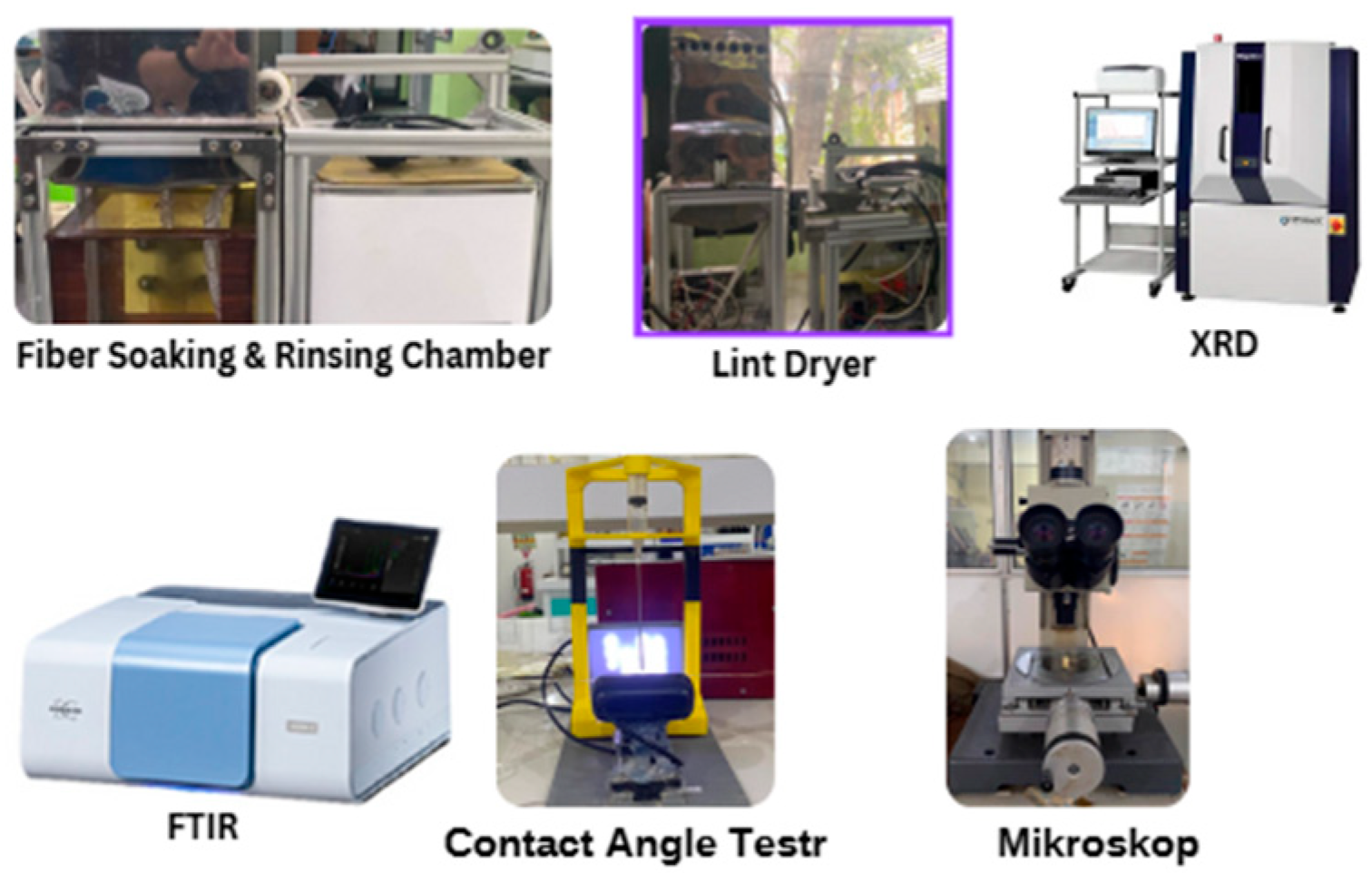
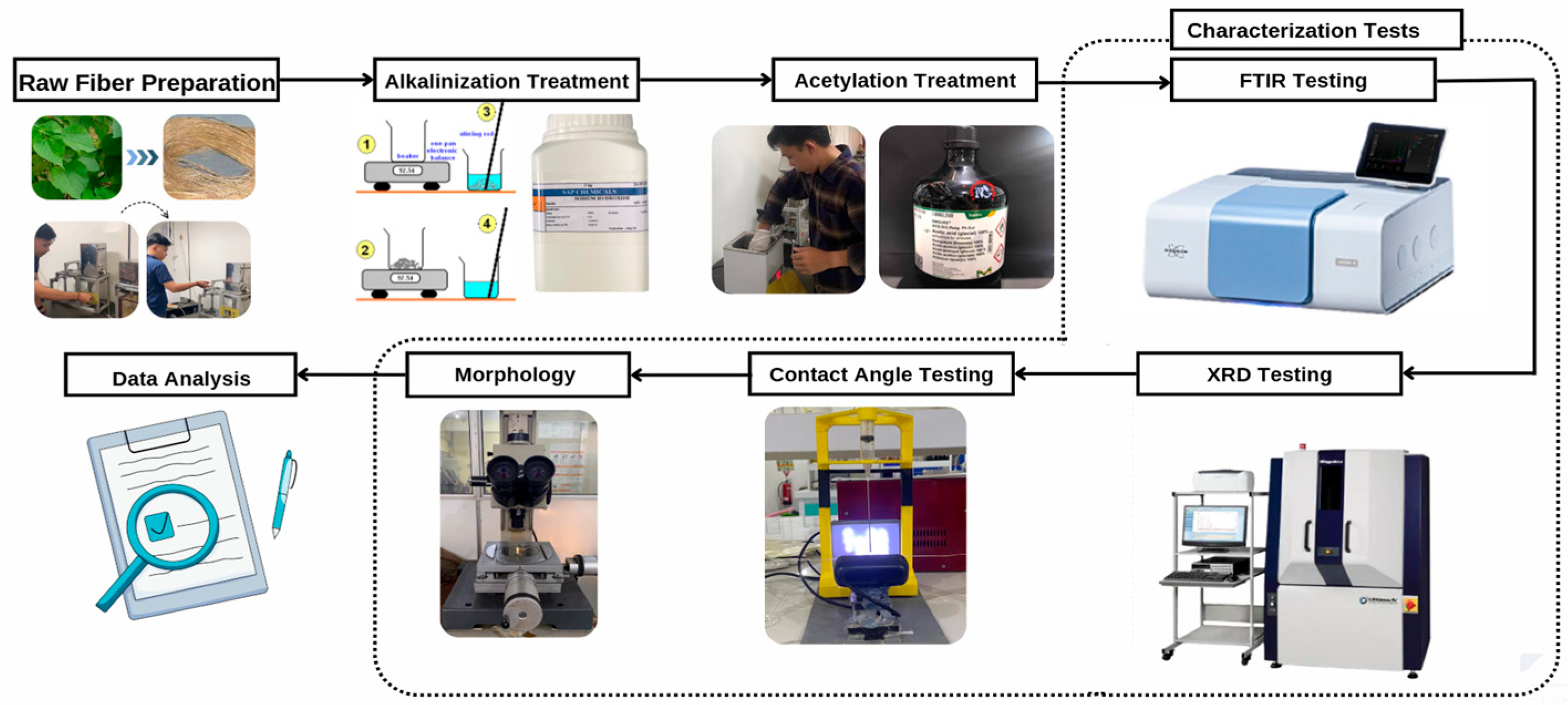
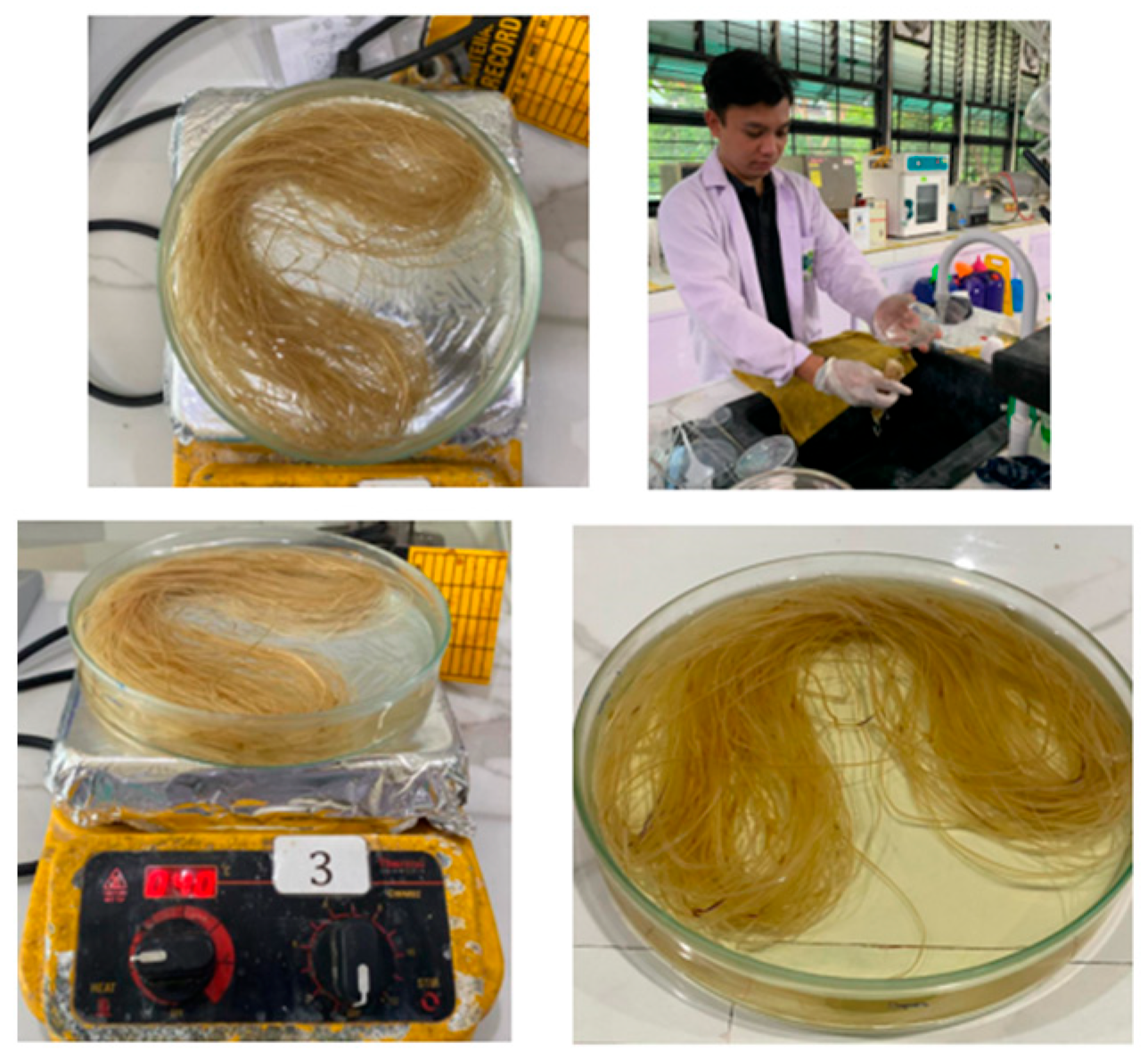
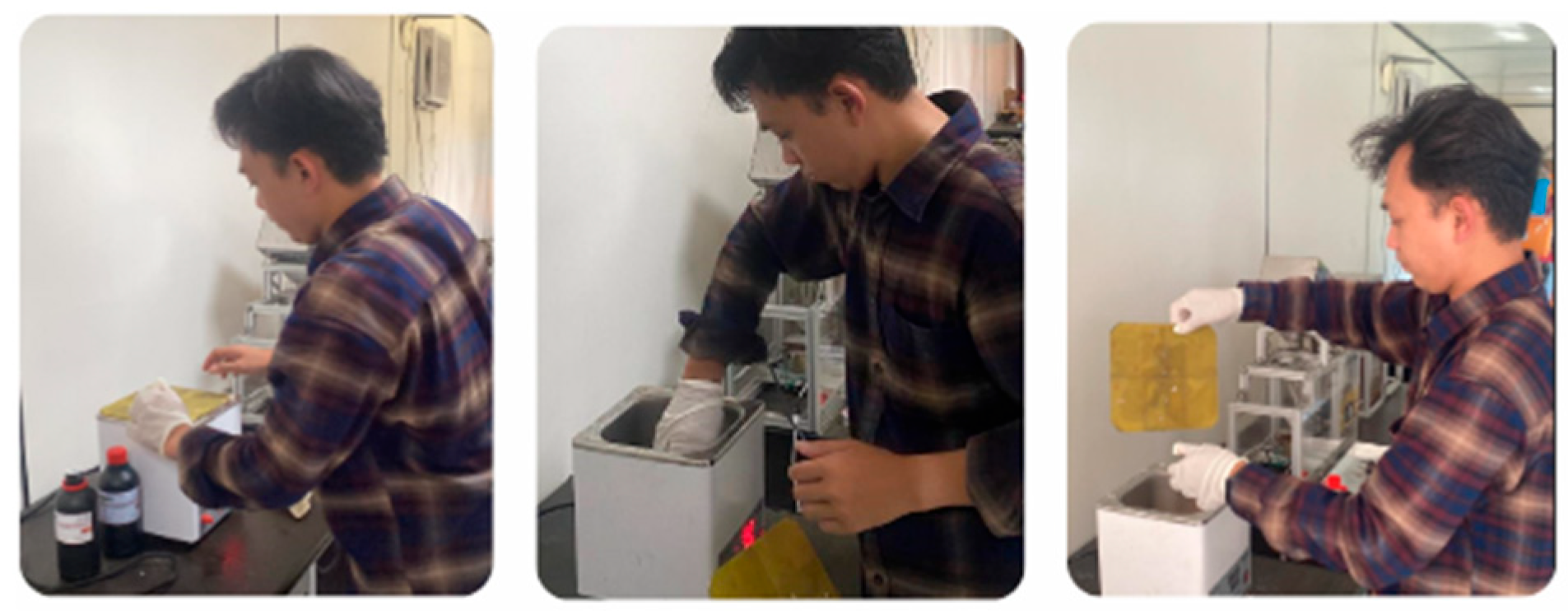
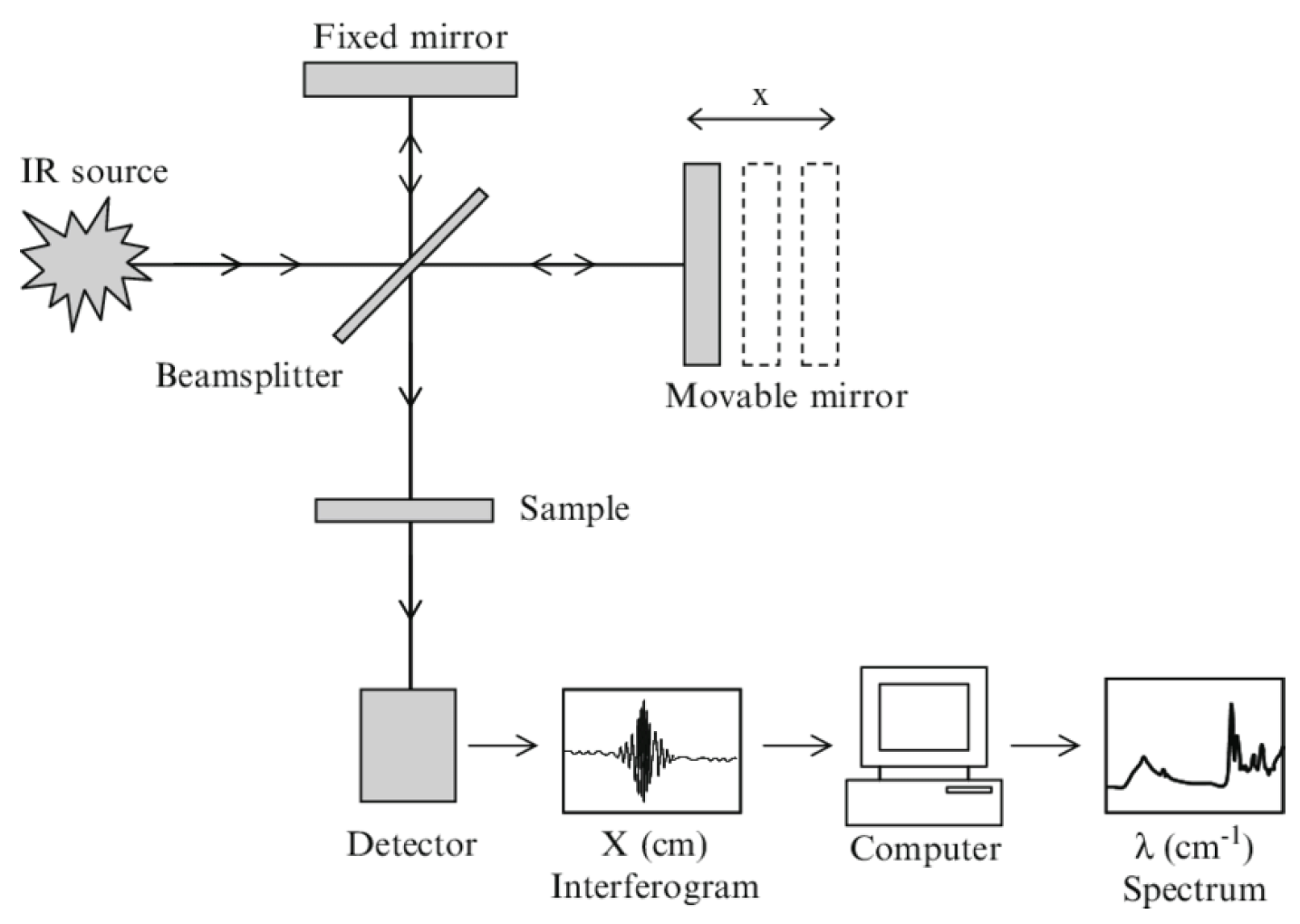
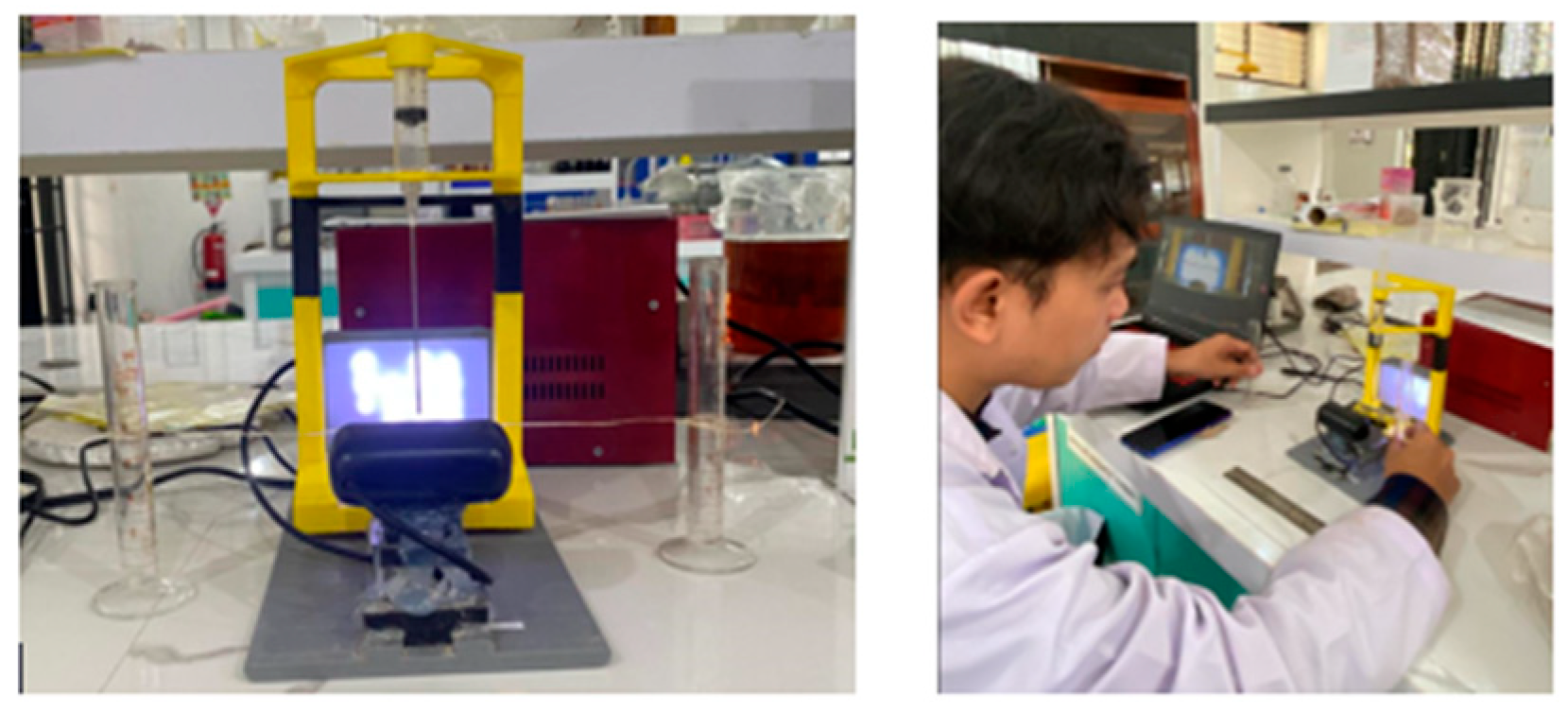
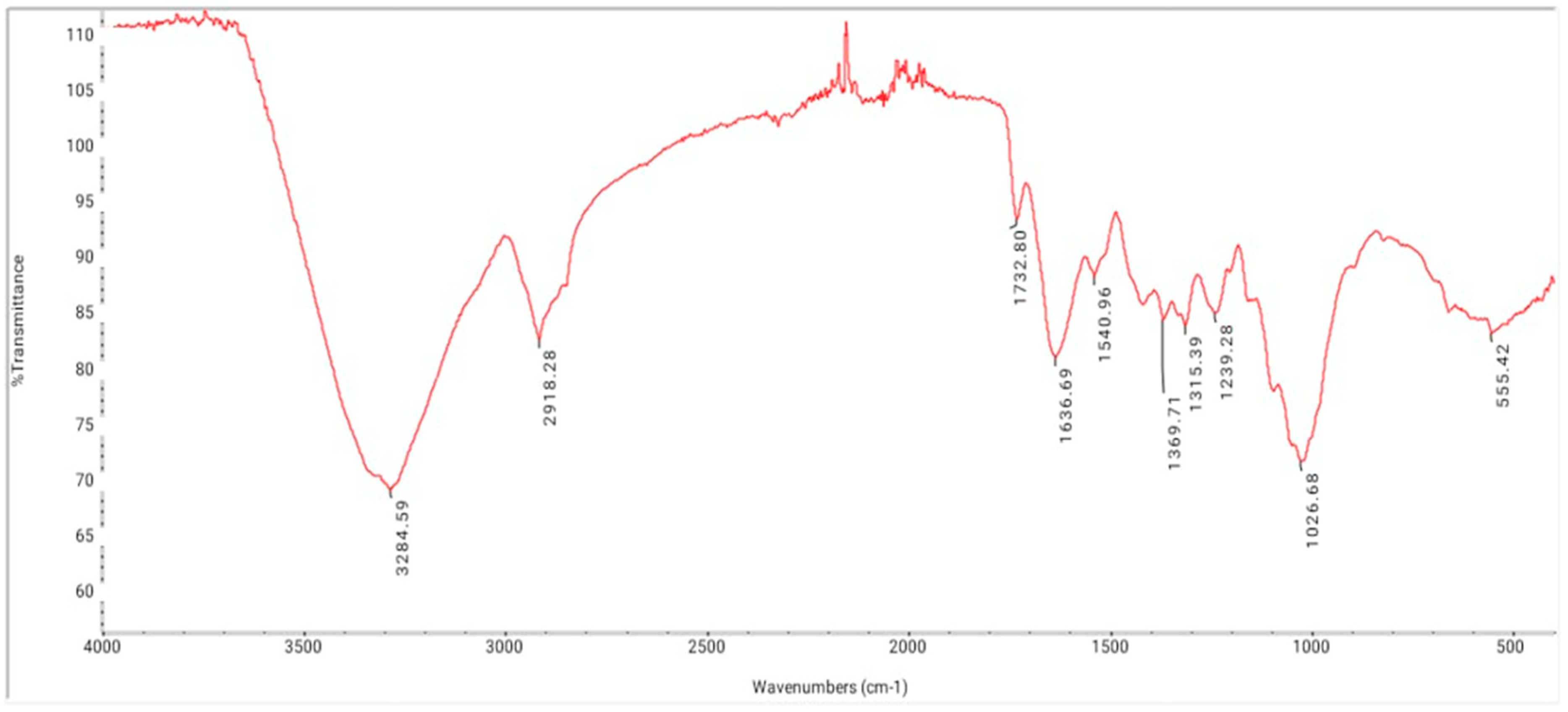
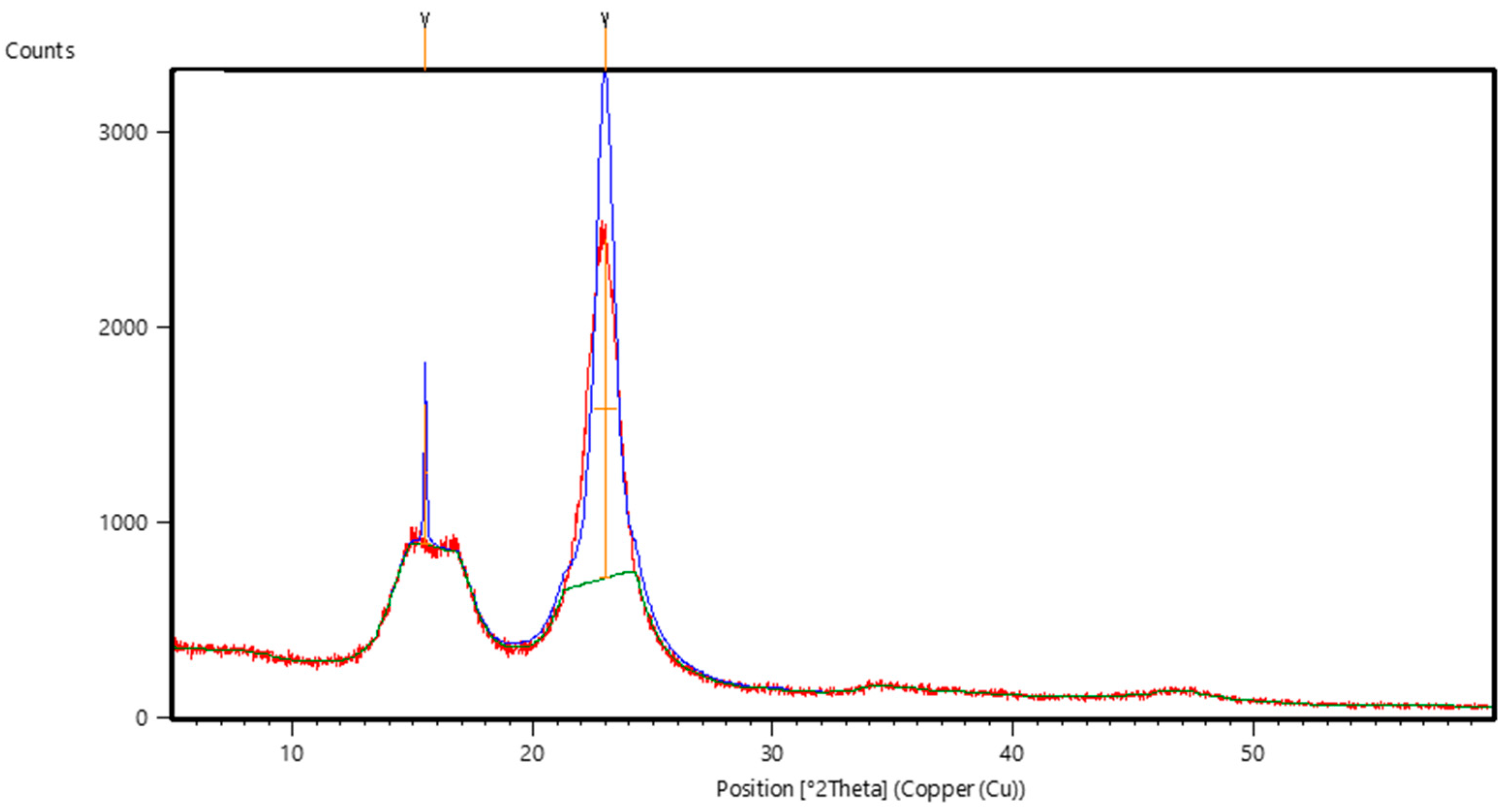
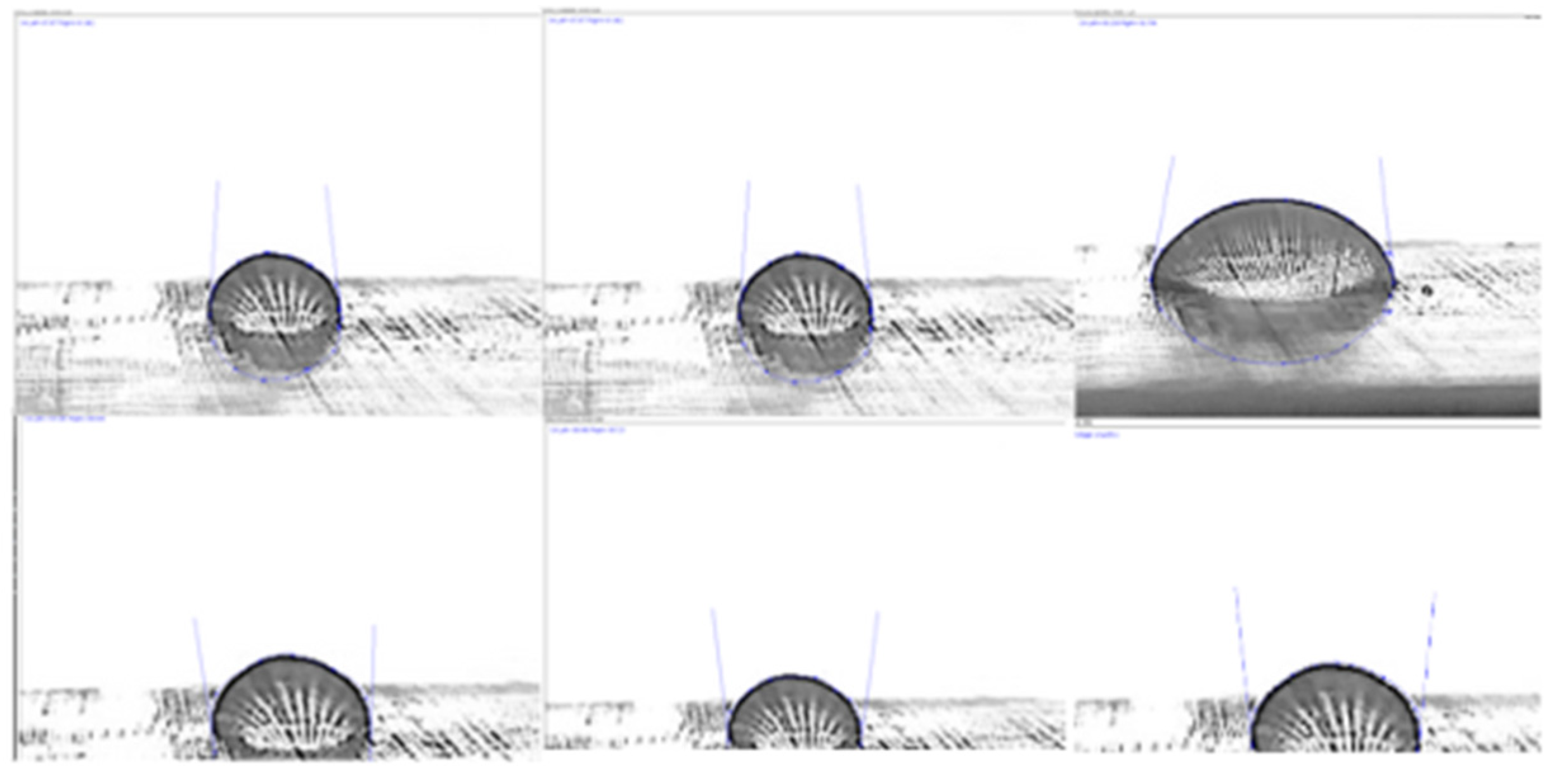
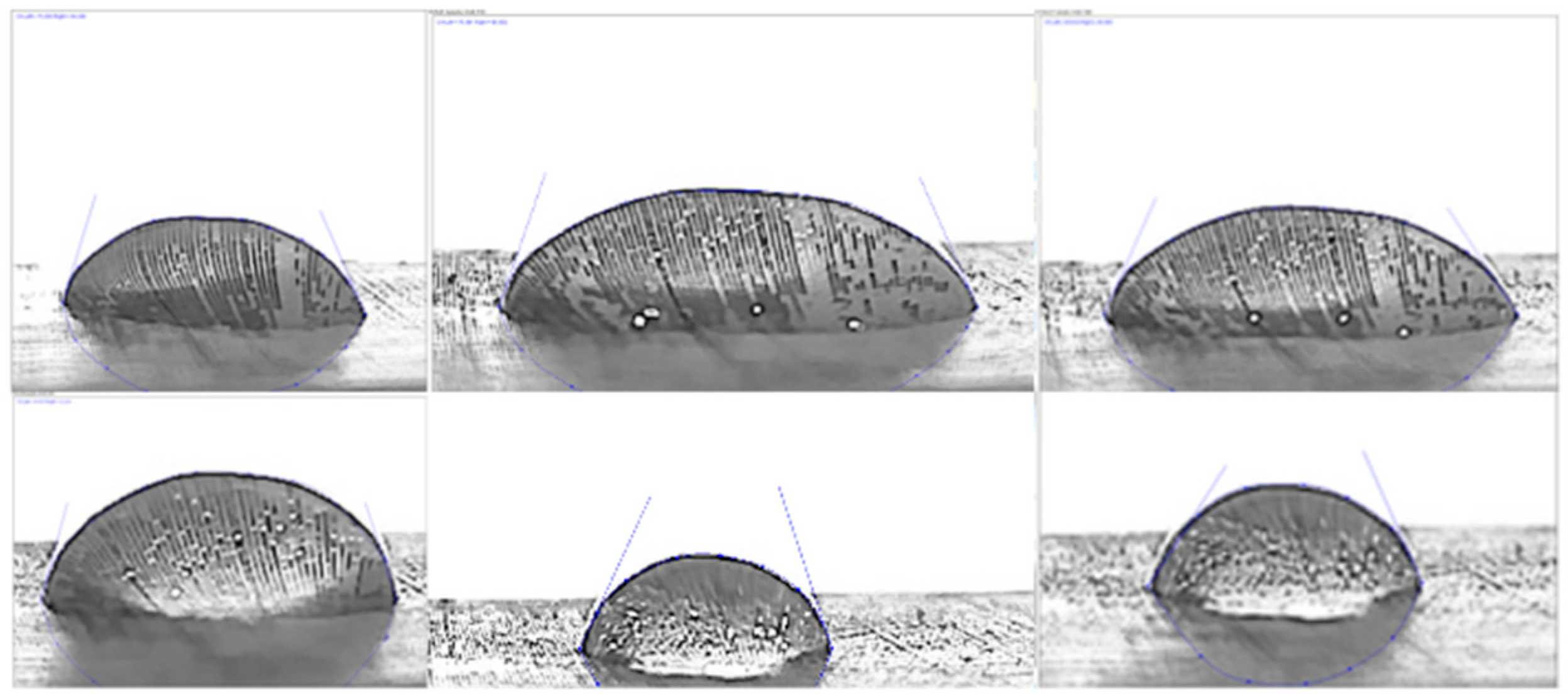
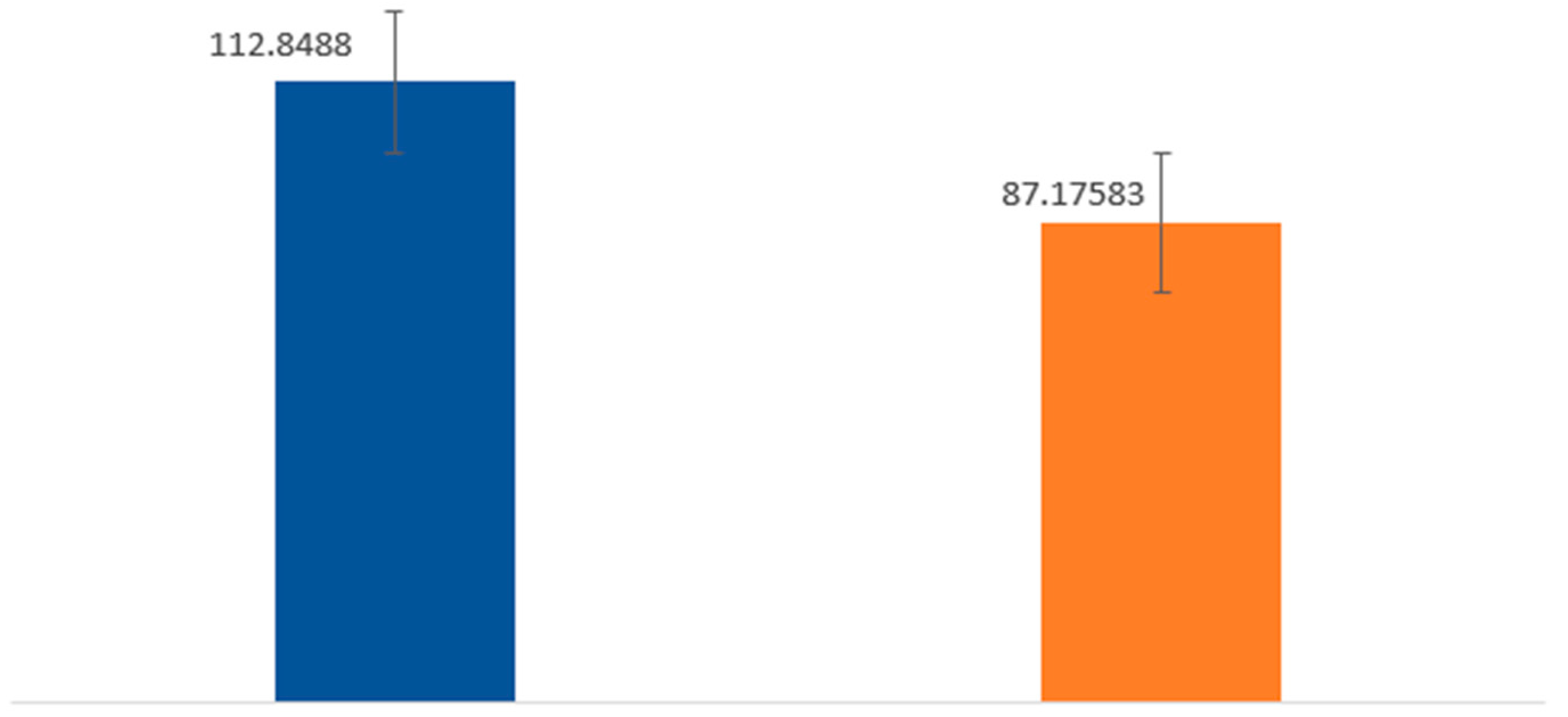
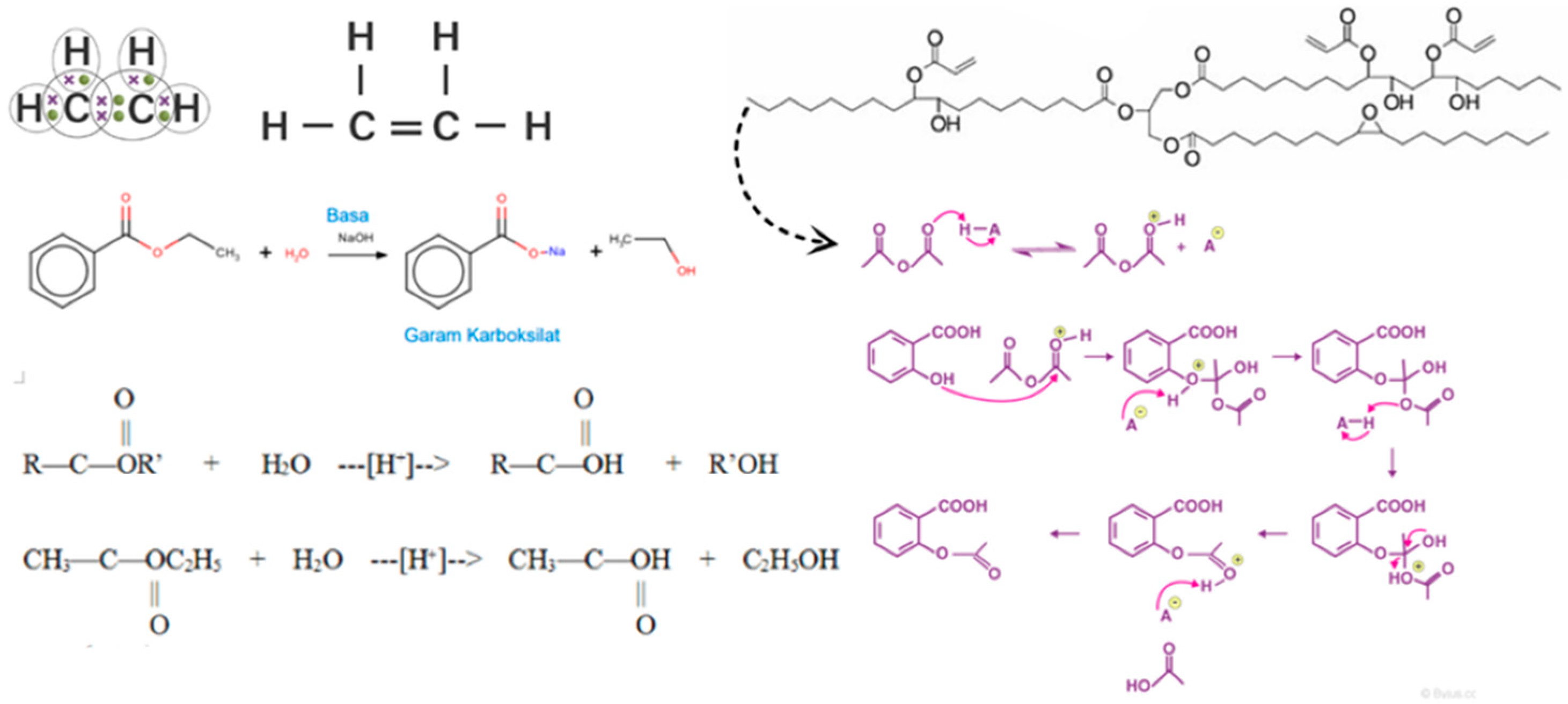

| Wavenumber (cm−1) | Wave Type | Description |
|---|---|---|
| 3284.59 | Hydroxyl Group (-OH) | Presence of hydroxyl groups from cellulose or hemicellulose. Intensity changes after acetylation indicate hydroxyl group involvement in the reaction. |
| 2918.28 | Stretching C-H | Stretched C-H of methyl or methylene groups in cellulose. Confirms that the organic structure of hemp fiber is preserved even after modification. |
| 1732.8 | Carbonyl Band (C=O) | Formation of carbonyl from acetylation reaction. Success of the acetylation reaction is consistent with other results showing increased carbonyl presence. |
| 1239.28 | Estering C-O | Presence of strong ester bonds, proving that chemical modification has occurred. Indicator of new properties in ramie fiber after acetylation. |
| 1540.96 | Lignin Aromatic Bands | Tendency of intensity reduction due to lignin reduction. Effectiveness of delignification with NaOH in reducing lignin content. |
| 1636.69 | Bound Water | Presence of bound water in the fiber structure, influencing hydrophilic properties. Potentially affects fiber interaction with polymer matrix in future applications. |
| 1026.68 | C-O-C Stretch Cellulose | Representation of C-O-C stretching in cellulose structure. Confirms that the basic cellulose structure is retained even after modification. |
| Pos. [°2Th.] | Height [cts] | FWHM Left [°2Th.] | d-Spacing [Å] | Rel. Int. [%] |
|---|---|---|---|---|
| 15.4971 | 720.79 | 0.0900 | 5.71330 | 41.23 |
| 22.9492 | 1748.08 | 0.8976 | 3.87214 | 100.00 |
| Types of Fiber | Point | CA Left | Right | Teta E | Contact Angle | Average Contact Angle |
|---|---|---|---|---|---|---|
| Fiber Treatment Delignification + Acetylation | 1 | 56.393 | 66.665 | 61.529 | 118.471 | 112.8488 |
| 2 | 65.194 | 71.857 | 68.5255 | 111.4745 | ||
| 3 | 74.537 | 72.224 | 73.3805 | 106.6195 | ||
| 4 | 65.924 | 56.5 | 61.212 | 118.788 | ||
| 5 | 70.891 | 66.082 | 68.4865 | 111.5135 | ||
| 6 | 75.2 | 64.348 | 69.774 | 110.226 | ||
| Fiber Delignification Treatment | 1 | 88.124 | 86.261 | 87.1925 | 92.8075 | 87.17583 |
| 2 | 81.47 | 92.338 | 86.904 | 93.096 | ||
| 3 | 91.231 | 97.903 | 94.567 | 85.433 | ||
| 4 | 101.901 | 88.638 | 95.2695 | 84.7305 | ||
| 5 | 98.46 | 95.721 | 97.0905 | 82.9095 | ||
| 6 | 97.29 | 94.553 | 95.9215 | 84.0785 |
Disclaimer/Publisher’s Note: The statements, opinions and data contained in all publications are solely those of the individual author(s) and contributor(s) and not of MDPI and/or the editor(s). MDPI and/or the editor(s) disclaim responsibility for any injury to people or property resulting from any ideas, methods, instructions or products referred to in the content. |
© 2025 by the authors. Licensee MDPI, Basel, Switzerland. This article is an open access article distributed under the terms and conditions of the Creative Commons Attribution (CC BY) license (https://creativecommons.org/licenses/by/4.0/).
Share and Cite
Rozikin, M.N.; Suwarta, P.; Sutikno, S. Chemical Modification with Alkalinization and Acetylation of Ramie Fibers for Eco-Friendly 3D Printing Filaments: Effects on Crystallinity, Structure, and Hydrophobicity. Eng. Proc. 2025, 84, 76. https://doi.org/10.3390/engproc2025084076
Rozikin MN, Suwarta P, Sutikno S. Chemical Modification with Alkalinization and Acetylation of Ramie Fibers for Eco-Friendly 3D Printing Filaments: Effects on Crystallinity, Structure, and Hydrophobicity. Engineering Proceedings. 2025; 84(1):76. https://doi.org/10.3390/engproc2025084076
Chicago/Turabian StyleRozikin, Muhammad Nurhidayatur, Putu Suwarta, and Sutikno Sutikno. 2025. "Chemical Modification with Alkalinization and Acetylation of Ramie Fibers for Eco-Friendly 3D Printing Filaments: Effects on Crystallinity, Structure, and Hydrophobicity" Engineering Proceedings 84, no. 1: 76. https://doi.org/10.3390/engproc2025084076
APA StyleRozikin, M. N., Suwarta, P., & Sutikno, S. (2025). Chemical Modification with Alkalinization and Acetylation of Ramie Fibers for Eco-Friendly 3D Printing Filaments: Effects on Crystallinity, Structure, and Hydrophobicity. Engineering Proceedings, 84(1), 76. https://doi.org/10.3390/engproc2025084076





